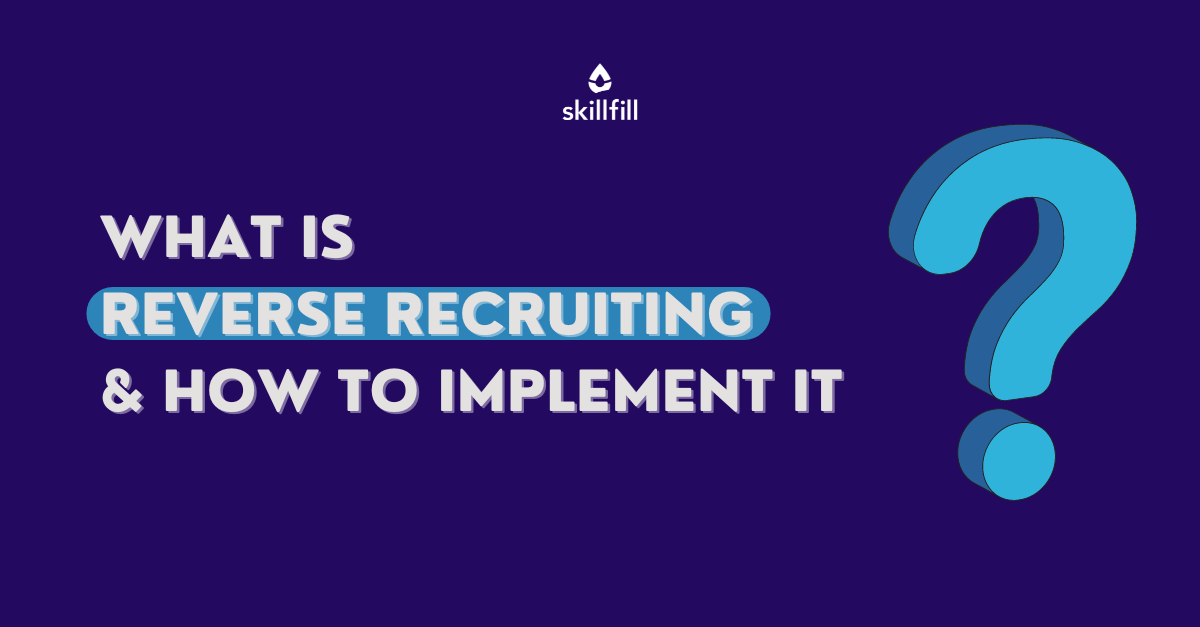Accept Advancement: Change Your Hiring Method with Reverse Recruiting
Accept Advancement: Change Your Hiring Method with Reverse Recruiting
Blog Article
Unlock the Power of Reverse Hiring Strategies for Successful Ability Procurement
By enticing top skill to seek out opportunities within your organization, reverse recruiting uses a fresh approach to attracting and retaining vital employees. As firms make every effort to stay ahead in the skill game, unlocking the capacity of reverse recruiting techniques can be the secret to safeguarding a solid and dynamic labor force.
Understanding Reverse Hiring
Understanding reverse recruiting is pivotal in navigating the evolving landscape of talent procurement approaches. Unlike typical employment methods where companies choose prospects, reverse recruiting includes the aggressive method of prospects seeking potential companies. This paradigm shift places candidates in the vehicle driver's seat, allowing them to pick firms that align with their worths, occupation goals, and job choices.
Essentially, reverse recruiting equips prospects to take control of their job search procedure by investigating business, connecting to recruiters or hiring managers directly, and showcasing their abilities and experiences. For companies, this strategy presents an one-of-a-kind possibility to draw in leading skill who are genuinely thinking about the firm and its mission, promoting a much more involved and committed labor force.
Advantages of Reverse Recruiting
Using reverse recruiting techniques can yield substantial advantages for both candidates and companies in the ability purchase process. By being come close to by employers who have currently determined them as prospective fits for their organization, candidates can feel extra valued and looked for after.
Additionally, reverse recruiting can aid companies distinguish themselves in an affordable ability market by showcasing a positive and forward-thinking method to recruitment. Inevitably, the benefits of reverse recruiting prolong to both prospects and employers by simplifying the hiring process and cultivating even more significant connections between the two parties.

Carrying Out Reverse Recruiting Methods
To properly integrate reverse recruiting methods right into an ability acquisition strategy, companies need to prioritize proactive engagement with potential prospects. This requires determining leading talent within the sector and establishing connections with them before a real work opening up emerges. One crucial tactic is to take advantage of social media platforms to get in touch with easy prospects that may not be proactively seeking new possibilities. By showcasing the company society, values, and occupation growth possibilities, organizations can ignite the interest of possible candidates and develop a skill pipe for future needs.
Moreover, executing tailored communication techniques can likewise boost the effectiveness of reverse recruiting. By consistently supporting connections with leading ability, organizations can stay ahead in the affordable skill acquisition landscape and protect the finest prospects for their group - reverse recruiting.
Leveraging Innovation backwards Recruiting
In the electronic age of ability procurement, using technical developments is extremely important for effective execution of reverse recruiting approaches. Leveraging technology backwards recruiting provides many advantages to improve the process and attract top skill effectively. Applicant tracking systems (ATS) play a critical role in handling candidate data, tracking communications, and automating interaction, permitting recruiters to concentrate on structure partnerships with possible hires.
Using data analytics devices can aid recruiters measure the effectiveness of their reverse recruiting approaches, identify locations for improvement, and make data-driven decisions to optimize the ability acquisition process - reverse recruiting. By accepting technology in reverse recruiting, companies can stay ahead in the competitive ability market and safe and secure top talent effectively.
Measuring Success backwards Recruiting
Having actually developed the foundational function of modern technology in enhancing reverse recruiting approaches, the next vital action depends on effectively gauging the success of these ingenious strategies. In the realm of reverse recruiting, typical metrics like time-to-fill and cost-per-hire may read the article not completely capture the impact of these methods. Rather, determining success in reverse recruiting needs an extra nuanced technique that concentrates on prospect interaction, employer branding enhancement, and long-term skill retention.
One secret statistics to take into consideration is prospect experience. By gathering comments from prospects that have gone through the reverse recruiting process, companies can obtain this hyperlink important understandings into locations for renovation and identify strengths to utilize. Additionally, tracking metrics associated to employer brand perception, such as social networks belief and Glassdoor testimonials, can provide a much more alternative view of just how reverse recruiting is forming the organization's track record in the skill market.
Ultimately, success in reverse recruiting should be gauged not just by the performance of filling up roles yet also by the quality of hires, their positioning with organizational culture, and their long-term efficiency within the company. By adopting an extensive technique to measuring success, companies can genuinely open the potential of reverse recruiting approaches for successful why not try here skill purchase.
Final Thought

Report this page